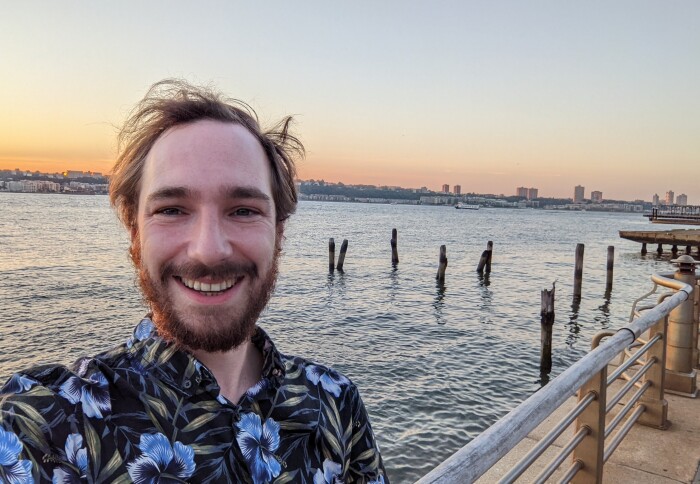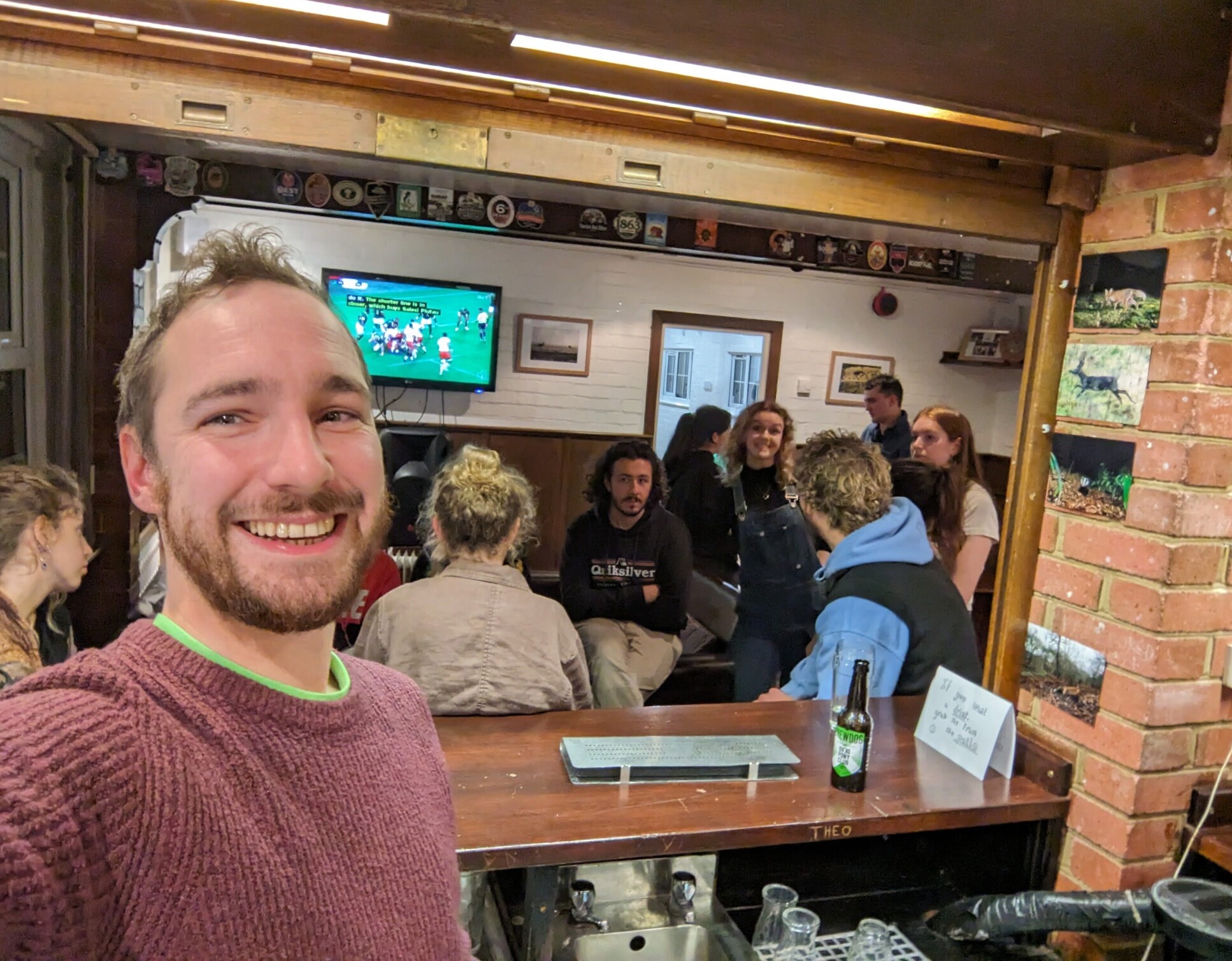Introducing Dr Francis Windram
by Emily Govan

We interviewed Dr Francis Windram, who started a new role with us in April as a Postdoctoral Research Associate.
Can you tell me a little about your background?
I grew up in a small town North of London called Harpenden, playing in the park and fields attached to the Rothamsted research station. My mother is a microbiologist who now works on phylomemetic analysis and my father was a computer scientist at Rothamsted itself. Since then I have lived all over the country, and am currently based in Lancaster most of the time.
Can you tell us a bit about your study prior to now?
I initially started an undergraduate course at University of Leeds in graphic design, before transitioning to Zoology after my second year. After a few years in finance post-graduation I moved to Silwood to do a Master’s in CMEE (computational methods in ecology and evolution). Following this I worked as a Research Assistant with Samraat Pawar and Lauren Cator, before starting a PhD, again at Silwood, with James Rosindell on spider web imaging and network extraction from images of physical networks.
What is your new role at Imperial?
I started in April as a Postdoctoral Research Associate, working with Lauren Cator on the One Health Vector-Borne Diseases Hub. Here we are working to create a centralised data aggregation platform for sharing data about the population dynamics, traits, abundance, and genomics of disease vectors in the UK (such as mosquitos, ticks, and biting midges). My focus is primarily on developing the data visualisation and programmatic access packages for this data platform.

What motivated you to work in this area?
The threat of vector-borne disease is predicted to increase given that climate change is likely to lead to warmer and wetter temperatures in the UK. From my own experience in modelling, it is vital to have good access to data in order to parameterise accurate models of disease vector dynamics. This opportunity to play a part in the tools that data scientists will use to access these sources of data, and to leverage my previous experience in graphic design to create useful visualisations for policy makers was exceptionally exciting for me. It is also always fun to push out of the fields you are comfortable in towards new and interesting fields of research.
What attracted you to working in Life Sciences at Imperial?
Imperial has been my academic home for many years, and coming out of PhD I was looking all over the country for Postdoctoral positions to continue my research. When this job appeared in my search, it felt exceedingly well-matched to my skillset and had the bonus of enabling me to keep working in the research community in Silwood that sparked so many of my interests.

Tell us an interesting/unusual fact about yourself.
Oof, always a tricky one. I did once end up getting accosted from my brief job as a chef to an uninhabited (and restricted) small island off the coast of Cornwall (specifically the island of Little Ganinick, Isles of Scilly) for an impromptu bee survey in partnership with the University of Leeds. Sadly no sight of the famous Scilly Bee, but we did come across a few nests of cormorants. I can guarantee no matter how bad and inaccessible a field site seems, it is made worse with the smell of cormorant nests. I’d still go back if I could though!
Article text (excluding photos or graphics) © Imperial College London.
Photos and graphics subject to third party copyright used with permission or © Imperial College London.
Reporter
Emily Govan
Department of Life Sciences